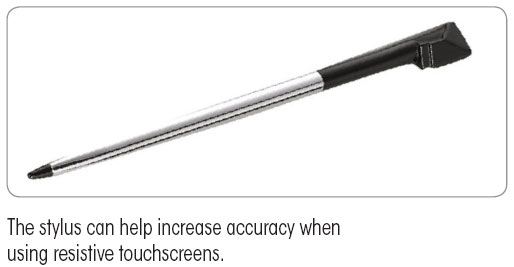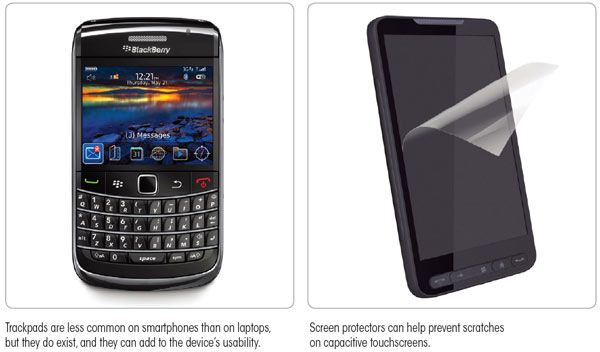In terms of computing’s history, we’re just beginning to scratch the surface of the lifestyle applications of touch-sensitive gadgets. In this article, we’ll take a look at two of the most important touch-based input technologies used in computers, smartphones, laptops, and tablets.
We’ll be covering the following topics in this tutorial:
All About Track-pads
The track-pad, or touch-pad, is a rectangular input device on laptops that lets users move their fingers across its surface to move a pointer. On laptops, users can perform right- and left-click functions using physical buttons near the track-pad. A double-tap of the track-pad surface will also serve as a double left-click. Some newer track-pads also support advanced functions, such as vertical and horizontal scrolling using the bottom and right edges of the track-pad surface, multi-touch gestures, and more. 
Track-pads can also be found in smartphones. For instance, the BlackBerry Bold 9700 replaces the trackball of previous models with a small touch-sensitive square above the keyboard. Users roll their thumbs over this track-pad to highlight options in menus and move the cursor on the screen, and they press down on this button to confirm actions.
Tracking Technology
The track-pad consists of either a grid of conductors in which a high-frequency signal is applied or a transmitter and receiver on opposite sides of the track-pad that support an electric field oscillating at a specified frequency. In both implementations, when your finger comes into contact with the grid or field, it acts as a ground point, which changes the capacitance directly beneath your finger. Next, the trackpad’s driver communicates the position of your finger on the screen. Track-pads began appearing on laptops in 1994 and quickly grew in popularity. Today nine out of every ten laptops ships with a track-pad.

Touchscreen Technology
Touchscreens began finding their way into consumer electronics in the 1980s.
Modern touchscreens are particularly useful, thanks to gestures: simple motions that users can perform with one or more fingers contacting the screen. For instance, a single finger-swipe in either direction can be used to scroll right or left, cycle through menus, or turn the pages of a document. Gestures can also be context sensitive and app-specific. Other popular gestures include the long press and pinch-to-zoom.
There have been several touch technologies employed in touchscreens, but the two most common today are resistive and capacitive.
Resistive touchscreen panels are composed layers of material. The underside of a flexible topmost layer is electrically-resistive, and there’s a gap between it and a second resistive layer. Using a stylus or finger, users can press on the surface layer and force the two resistive layers to touch, and this point can be detected along a grid to determine the position of the finger or stylus. Resistive touchscreens were common in early touchscreen devices, such as PDAs and tablets. They’re durable and relatively inexpensive to manufacture, making them ideal for the food service, healthcare, and manufacturing industries.
Disadvantages include a reduction in screen clarity due to additional layers between the viewer and the screen and potential damage from sharp objects.
Capacitive touchscreens consist of an insulator, such as glass, coated with a conductive transparent material. Because the human body is also a conductor, your finger touching a capacitive screen changes the capacitance at that point and distorts the screen’s electrostatic field. Multiple position-tracking technologies can be used to determine the position of the finger, and even of multiple fingers. Capacitive touchscreens are by far the more popular touchscreen technology in use today, and advancements are constantly increasing the responsiveness and clarity of capacitive touchscreens. Drawbacks to capacitive touchscreens include an inability to use them with gloves or non-capacitive instruments and the risk of screen scratching.
More Than A Feeling
Without a doubt, touchscreens will be one of the most prevalent input methods in the future. Now that you know a little about how they work and where you’ll find them, you can buy your next touchscreen device with confidence.
 Dinesh Thakur holds an B.C.A, MCDBA, MCSD certifications. Dinesh authors the hugely popular
Dinesh Thakur holds an B.C.A, MCDBA, MCSD certifications. Dinesh authors the hugely popular